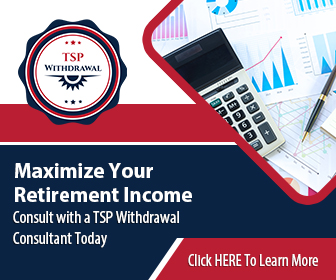Key Takeaways
- Understanding the differences between a Roth IRA and a 401(k) is essential for making informed retirement savings decisions.
- This guide explores the key differences and benefits of both retirement accounts for beginners.
Roth IRA and 401(k): Differences and Benefits for Beginners
Planning for retirement involves understanding various savings options and choosing the ones that best fit your financial goals. Two of the most popular retirement savings vehicles are the Roth IRA and the 401(k). Each has unique features, advantages, and limitations. This guide will help beginners understand the differences and benefits of a Roth IRA and a 401(k), covering contribution limits, tax treatment
- Also Read: FAA, Law Enforcement, and Special Federal Employee Categories—Here’s What Makes Their Retirement Unique
- Also Read: Blending Private and Public Sector Retirement Plans Is Complicated—Here’s Where Couples Get It Wrong
- Also Read: The Silent Shift in Postal Service Retirement Benefits That Could Change Everything by 2026
Contribution Limits: Roth IRA vs. 401(k)
One of the key differences between a Roth IRA and a 401(k) is the annual contribution limit set by the IRS.
1. Roth IRA Contribution Limits: For 2024, the contribution limit for a Roth IRA is $6,500 for individuals under 50. For those aged 50 and older, the limit is $7,500, which includes a $1,000 catch-up contribution. These limits apply to your total contributions to all IRAs, including both Roth and Traditional IRAs.
2. 401(k) Contribution Limits: The contribution limit for a 401(k) plan is significantly higher. In 2024, employees can contribute up to $23,000 to their 401(k) accounts. Those aged 50 and older can contribute an additional $7,500 as a catch-up contribution, bringing the total limit to $30,500. These higher limits make 401(k) plans an attractive option for those looking to save more aggressively for retirement.
Tax Treatment: Pre-Tax vs. Post-Tax Contributions
The tax treatment of contributions and withdrawals is another major difference between Roth IRAs and 401(k) plans.
1. Roth IRA: Contributions to a Roth IRA are made with after-tax dollars, meaning you don’t receive a tax deduction for the money you contribute. However, the significant advantage is that your investments grow tax-free, and qualified withdrawals in retirement are also tax-free. This can provide substantial tax savings in the long term, especially if you expect to be in a higher tax bracket in retirement.
2. 401(k): Contributions to a traditional 401(k) are made with pre-tax dollars, which reduces your taxable income in the year you make the contribution. This can provide an immediate tax benefit. However, the money in your 401(k) grows tax-deferred, and you will owe taxes on both contributions and earnings when you withdraw the funds in retirement. There is also the option of a Roth 401(k), where contributions are made with after-tax dollars, but withdrawals in retirement are tax-free.
Investment Options: Flexibility and Choices
The range of investment options available in Roth IRAs and 401(k) plans can vary significantly.
1. Roth IRA: Roth IRAs generally offer a wide range of investment options, including stocks, bonds, mutual funds, ETFs, and more. This flexibility allows you to build a diversified portfolio tailored to your risk tolerance and financial goals. You can open a Roth IRA with a variety of financial institutions, such as banks, brokerage firms, and robo-advisors, giving you control over your investment choices.
2. 401(k): The investment options in a 401(k) plan are determined by the plan provider chosen by your employer. While many 401(k) plans offer a variety of investment choices, including mutual funds, index funds, and target-date funds, the selection may be more limited compared to a Roth IRA. Additionally, the fees associated with 401(k) investments can vary, so it’s important to understand the costs involved.
Employer Contributions: Matching and Vesting
Employer contributions are a key feature of 401(k) plans that can significantly boost your retirement savings.
1. Employer Matching: Many employers offer matching contributions to your 401(k) plan. A common matching formula is 50% of your contributions up to a certain percentage of your salary (e.g., 50% of contributions up to 6% of your salary). Employer matching is essentially “free money” and can greatly enhance your retirement savings. It’s important to contribute at least enough to your 401(k) to take full advantage of your employer’s match.
2. Vesting Schedules: Employer contributions to your 401(k) may be subject to a vesting schedule, which determines when you fully own the employer-contributed funds. Vesting schedules can be immediate or spread out over several years. Understanding your plan’s vesting schedule is crucial to maximize your retirement benefits, especially if you plan to change jobs.
3. No Employer Contributions for Roth IRA: Roth IRAs do not offer employer contributions. All contributions to a Roth IRA come from the account holder, making employer matching a unique benefit of 401(k) plans.
Withdrawal Rules and Penalties: What to Expect
The rules for withdrawing funds from Roth IRAs and 401(k) plans differ, especially regarding penalties and taxes.
1. Roth IRA Withdrawals:
- Qualified Withdrawals: For withdrawals to be tax-free, the Roth IRA must have been open for at least five years, and you must be at least 59½ years old.
- Non-Qualified Withdrawals: You can withdraw your contributions (not earnings) at any time without taxes or penalties. However, withdrawing earnings before age 59½ or before the five-year rule is met can result in taxes and a 10% early withdrawal penalty.
- No RMDs: Roth IRAs do not require minimum distributions during the account holder’s lifetime, allowing your money to grow tax-free for a longer period.
2. 401(k) Withdrawals:
- Qualified Withdrawals: Withdrawals are taxed as ordinary income, and if taken before age 59½, they may incur a 10% early withdrawal penalty unless an exception applies (e.g., hardship withdrawals, substantially equal periodic payments, etc.).
- Required Minimum Distributions: Traditional 401(k) plans require you to start taking RMDs at age 72. Roth 401(k) accounts are also subject to RMDs, but you can avoid this by rolling over the funds into a Roth IRA.
Combining Roth IRA and 401(k) for Maximum Benefits
Using both a Roth IRA and a 401(k) can provide a balanced and flexible approach to retirement savings.
1. Tax Diversification: By contributing to both a Roth IRA and a traditional 401(k), you can achieve tax diversification. This means having a mix of tax-free and tax-deferred accounts, giving you more flexibility in managing your taxable income in retirement.
2. Maximizing Contributions: Taking advantage of the higher contribution limits of a 401(k) while also contributing to a Roth IRA allows you to save more aggressively for retirement. This strategy can help you build a larger retirement nest egg.
3. Strategic Withdrawals: In retirement, having both types of accounts allows you to strategically withdraw funds based on your tax situation. For example, you can withdraw from your Roth IRA in years when you want to minimize taxable income or from your 401(k) when you are in a lower tax bracket.
4. Employer Matching: Contributing to a 401(k) up to the employer match ensures you don’t miss out on free money, while additional savings can be directed to a Roth IRA for tax-free growth.
Conclusion
Understanding the differences and benefits of a Roth IRA and a 401(k) is essential for beginners planning their retirement savings. While a Roth IRA offers tax-free growth, flexible investment options, and no RMDs, a 401(k) provides higher contribution limits and the potential for employer matching. Combining both accounts can maximize your retirement savings, provide tax diversification, and offer strategic withdrawal options in retirement. By leveraging the unique advantages of each account, you can build a robust and flexible retirement plan tailored to your financial goals.












